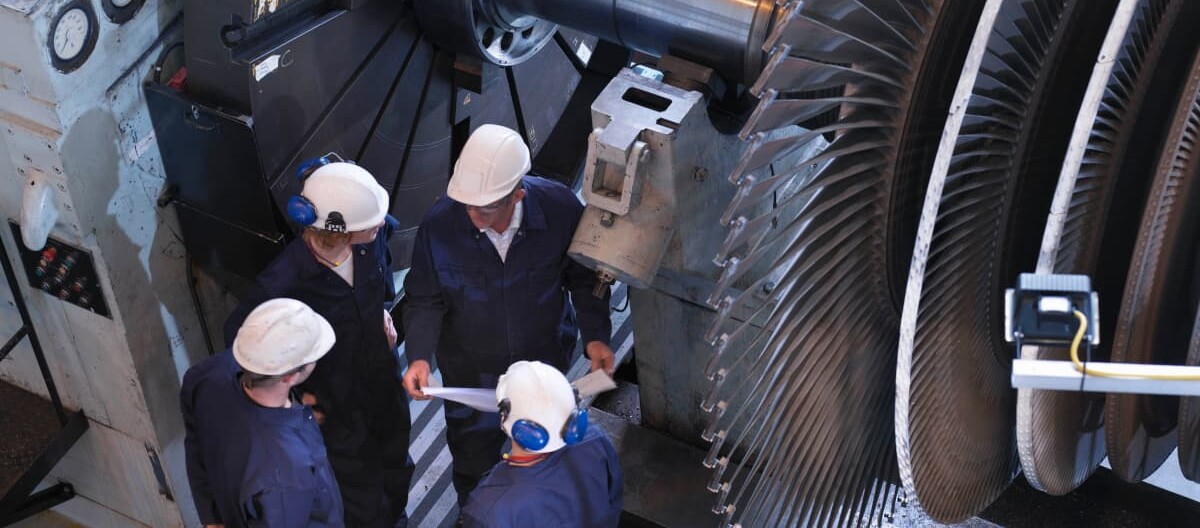What is predictive maintenance?
Predictive maintenance (PdM) is a proactive maintenance strategy that uses data analysis and predictive modeling to determine the condition of in-service equipment and predict when maintenance should be performed.
This approach is way better than routine or time-based preventive maintenance because tasks are only performed when needed, not just because time has passed.
With data and technology predictive maintenance lets you see failures before they happen. This proactive approach reduces downtime and costs and extends equipment life and overall efficiency.
In this post we’ll dig into predictive maintenance, how it works, the technologies involved and real-world examples from companies like MAN, TGW and ZF to see how predictive maintenance is industrial and how even SMEs can do it.
How Predictive Maintenance, machine learning and AI operate
Unexpected machine failure can often be very expensive. Repairs, downtime and a production break can result in high costs. Also, if promised deadlines are missed due to a defect, contractual penalties may incur.
Inspections, which take place at fixed times, are intended to reduce risks such as these. However, this also involves replacing faultless components that could still continue to work. Nonetheless, the manufacturer routinely orders replacements - regardless of their actual condition.
Predictive maintenance, on the other hand, predicts when a unit will fail. This means units can be repaired or replaced at an appropriate time. The method makes maintenance intervals according to regulations redundant. Repairs are not carried out on suspicion or according to a service schedule, but only when necessary.
This is possible thanks to the Internet of Things (IoT). The data generated in the process is collected in a predictive maintenance system, which collects, weights and evaluates it.
Technologies such as sensors, artificial intelligence (AI) and/or machine learning are used in the process. In combination, critical deviations from defined tolerance values can be detected and component failure probabilities can be predicted.
However, predictive maintenance is not only aimed at potential savings in maintenance. The system can also uncover weak points in processes and identify potential for improvement.
This is the current status for SMEs
While predictive maintenance may seem complicated, the power of machine learning and AI makes it available to small and medium sized businesses (SMEs). In the beginning, financial and human resources are less important than a strategy with a clear focus.
These technologies can analyse data to predict equipment failures, optimise maintenance schedules and uncover hidden patterns and save you time and money.
It may seem scary at first but implementing predictive maintenance doesn’t require a big upfront investment. In the beginning, having a clear strategy is more important than having loads of money or people.
Don’t underestimate the value of the data you already have! Many companies already have a treasure trove of data hidden away in Excel sheets or manually compiled lists. That data, once structured and analysed with machine learning and AI can give you valuable insights into equipment health.
The 3 best examples from the industry
- MAN: Vehicles from truck manufacturer MAN repeatedly broke down with a defective injector in the engine. The breakdowns led to repair costs, penalties and a lower quality ranking. To prevent this from happening in the future, MAN had a telematics system developed that works with data mining and statistical comparisons which made it possible to collect and analyze information from the ignition coil and injection system. This resulted in error patterns that were statistically predictable.
- Intralogistics specialist TGW regularly checks the state of the vacuum for the gripper of its order picking robot “Revolution”. It can react quickly, if the specified tolerance values deviate. This is necessary if dust particles in the system lead to a loss of pressure for example. This monitoring of the actual state is also known as condition monitoring.
- ZF: ZF builds driveline and chassis technology. This also includes gearboxes for wind turbines. If these are located in offshore facilities off the coast, maintenance is difficult and cost intensive. ZF developed together with a partner a predictive maintenance project that reduces maintenance and repair costs. As a result, inspectors are required to visit the sea less frequently, only when indispensable.
Predictive maintenance and machine learning are changing the way industries approach equipment maintenance. As seen with MAN, TGW and ZF, the benefits are across all industries, cost reduction, efficiency improvement and less downtime.
Businesses of all sizes, including SMEs can proactively address potential issues before they become costly problems with data analysis, AI and IoT.
Implementing predictive maintenance requires strategic planning and maybe external expertise but the long-term benefits are obvious. In the future predictive maintenance will be key for companies to get ahead and to be operational excellence in a competitive market
Streamline your sales and reach more customers with our europage platform. We provide you with the tools you need to expand into new sales channels efficiently.

